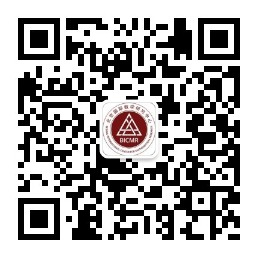One Day Workshop on Metric Geometry
活动时间: 从 2017-12-16 08:00 到 18:00
场地: 北京国际数学研究中心,镜春园78号院(怀新园)77201室
Organizer:
Jian Ge (BICMR)
Speaker:
Xiaoyang Chen (Tongji University)
Yusheng Wang (Beijing Normal University)
Guoyi, Xu (YMSC, Tsinghua University)
Shicheng Xu (Capital Normal University)
Masoumeh Zarei (BICMR, Peking University)
Schedule:
9:00-10:00 Xiaoyang Chen
10:00-10:30 Tea Break
10:30-11:30 Masoumeh Zarei
Lunch Break
1:30-2:30 Yushen Wang
2:30-3:00 Guoyi Xu
3:00-3:30 Tea Break
3:30-4:30 Shicheng Xu
Abstract:
Xiaoyang Chen,
Title: Symplectic aspects of polar actions
Abstract: Polar actions are a special class of isometric group actions on Riemannian manifolds. We will give a symplectic look at polar actions and discuss its application in symplectic geometry. This is a joint work with Jianyu Ou.
Yusheng Wang
Title: Radial cone-neighborhood isometry in Alexandrov geometry
Abstract: We will introduce a new definition in Alexandrov geometry with lower curvature bound: Radial cone-neighborhood isometry. And we will show its applications, e.g., to prove Soul Conjecture in Alexandrov geometry in dimension 4. This is based on joint works with Professor Xiaochun Rong.
Guoyi Xu
Title: The integral of the curvature
Abstract: The classical Gauss-Bonnet theorem in 19th century links the integral of the curvature to the topology of compact manifolds in 2-dim case. The well-known Gauss-Bonnet-Chern theorem generalize this result to higher dimension in 1940’s.On the other hand, Cohn-Vossen’s inequality opened the door of estimating the integral of the curvature on non-compact manifolds in 2-dim in 1930’s. However, the higher dimension version of Cohn-Vossen’s inequality is still missing, although Yau posed one open question along this line in 1990’s. We will survey the history of the study around the integral of the curvature, from Gauss, Bonnet, Chern, Yau to the current state, my recent research result will also be presented. The key idea of the proof will be presented in the talk, some elementary topology and Riemannian geometry knowledge is enough to understand most of the talk.
Shicheng Xu
Title: First eigenvalue pinching and quantitative rigidity of geodesic spheres in a Riemannian manifold.
Abstract: Let us imagine that there is an immersed hypersurface M in a complete manifold N. If one knocks M to hear the first eigenvalue of M and compare it to the average/maximum mean curvature of M, is there any chance that the shape of M and the ambient geometry of N around M can be determined by those information? We prove that in certain cases it is true. To be precisely, let M be immersed to a convex ball of radius less than \pi/4√K, where K is the upper sectional curvature bound of N (4√K=\infty if K<=0), then it was well-known by Heintze (1988) that λ1 <=n(K+|H|), where |H| is either the average or the maximum of the mean curvature of M (depending on the sign of K). We prove that if λ1>=n(K+|H|)(1-ε), where ε depends on the dimension and the lower curvature bound of N, then M is embedded, Hausdorff close and diffeomorphic to a geodesic sphere in N, and the domain Ω enclosed by M is Gromov-Hausdorff close to a convex ball of constant sectional curvature K. If λ1=n(K+|H|), then M and Ω are a geodesic sphere and a convex ball of constant curvature K respectively. The proof involves the method of Moser iteration, comparison geometry and some fundamental facts in Cheeger-Colding's theory. It is a recent joint work with Yingxiang Hu.
Masoumeh Zarei
Title: Equivariant Classification of Cohomogeneity One Alexandrov Spaces in Low Dimensions
Abstract: In this talk, I will give an equivariant classication of cohomogeneity one Alexandrov spaces in dimensions 5; 6 and 7. As a result, we show that all orbifolds appeared in the classication are equivariantly homeomorphic to a smooth good orbifold of cohomogeneity one. Furthermore, I will discuss a characterization of cohomogeneity one Alexandrov spaces to be topological manifolds. In particular, we prove that such spaces are homeomorphic to smooth manifolds in low dimensions. This is a joint work with Fernando Galaz-Garcia.


